The 40 greatest synth sounds of all time, No 8: a-ha - Take On Me
It's not just the video that made this one memorable
Remember the children’s book about the little train engine that just couldn’t seem to get up that hill? a-ha must have taken its tale of perseverance to heart, as their signature hit went through multiple bands, titles, revisions, and releases before finally becoming one of the most memorable tunes of the 1980s.
Pre-a-ha, guitarist Päl Waaktaar and keyboardist Magne Furuholmen had a band called Bridges, with whom they wrote a song called Panorama which became Miss Eerie, and it contained a certain familiar synth riff.
After Bridges disbanded, they joined forces with singer Morten Harket as a-ha and together they did a version of Miss Eerie - now renamed Lesson One. This new version would be retitled yet again as Take On Me.
The new group recorded a demo of the tune, re-recorded it with producer John Ratcliffe, and eventually inked a deal with Warner Bros UK. After an unsatisfactory mix from producer Tony Mansfield, the song was remixed yet again and finally released to an uninterested public, reaching 137 on the UK singles chart.
At this point, Warner Brothers America offered to finance yet another version. This latest attempt was built around a LinnDrum beat, a DX7 bass, and PPG Wave. The main riff was played on a Roland Juno-60, and doubled with another synth - possibly a DX7.
WB America released this latest version along with a music video of the band performing… only to meet the same indifference.
At this point, any sane persons involved should have cut their losses. However, producer Alan Tarney gave the song a once-over and an innovative new video was commissioned from director Steve Barron. The rest, as they say...
Get the MusicRadar Newsletter
Want all the hottest music and gear news, reviews, deals, features and more, direct to your inbox? Sign up here.
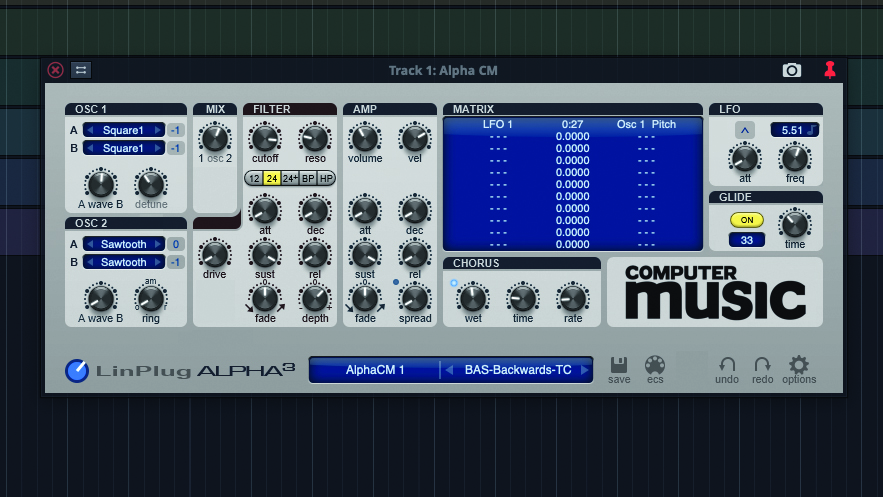
Step 1: We don’t have the space to recreate both the analogue and digital constituents of this patch, but as the Roland Juno-60 was front-and-centre of the original, you get pretty close with AlphaCM, which was originally intended to resemble the Juno series. Let’s load it up, and click on the browser at the bottom to locate and load the Z-Init patch.
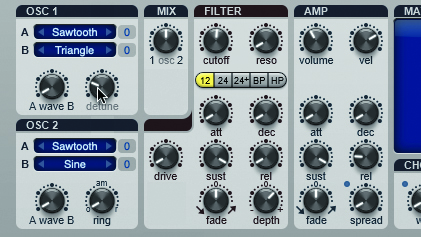
Step 2: We’ll start by building up our waveforms. Going to Osc 1, we’ll select the wave called Square2 as our B wave, and we’ll set the Wave knob to around 2 o’clock. Next, we’ll push the Detune knob up to the 10 o’clock position. Now, for Osc 2. Here, we’ll select Square1 as the A wave, and Sawtooth as the B wave.
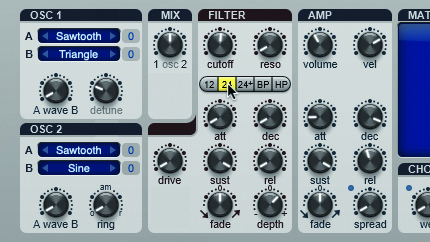
Step 3: We’ll set Osc 2’s Wave knob to 1 o’clock or so. Let’s reduce the octave of Osc 2’s A slot to -1. Now, let’s go to the Mix section and set the Mix to a little past the 10 o’clock position. That’s the oscillators sorted. Moving on to the filter section, we’ll click the 24 button. Let’s set the Cutoff to just under 10 o’clock.
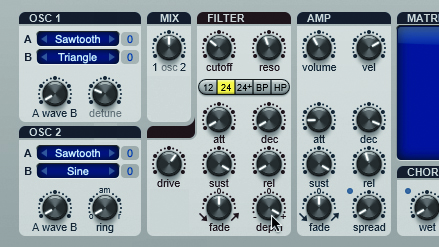
Step 4: We’ll likewise set the Res to just under 10 o’clock. In the matrix, we’ll choose Note as a mod source and Filter Cutoff as its destination, with an amount of 0.74 or so. Back in the filter, we’ll crank the Envelope Depth Knob nearly full. We’ll set the Sustain to just past 11 o’clock, and the Decay to about 10 o’clock.
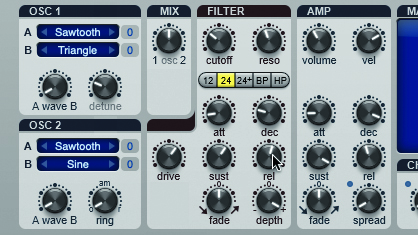
Step 5: Next, we set the Filter Envelope’s Release to just over halfway. Moving to the amp section, we’ll set its Decay to just below 2 o’clock, Sustain fully down, and Release to just past the 10 o’clock mark. This gets us close to the characteristic pluck sound of the original tune, but there’s still something missing.
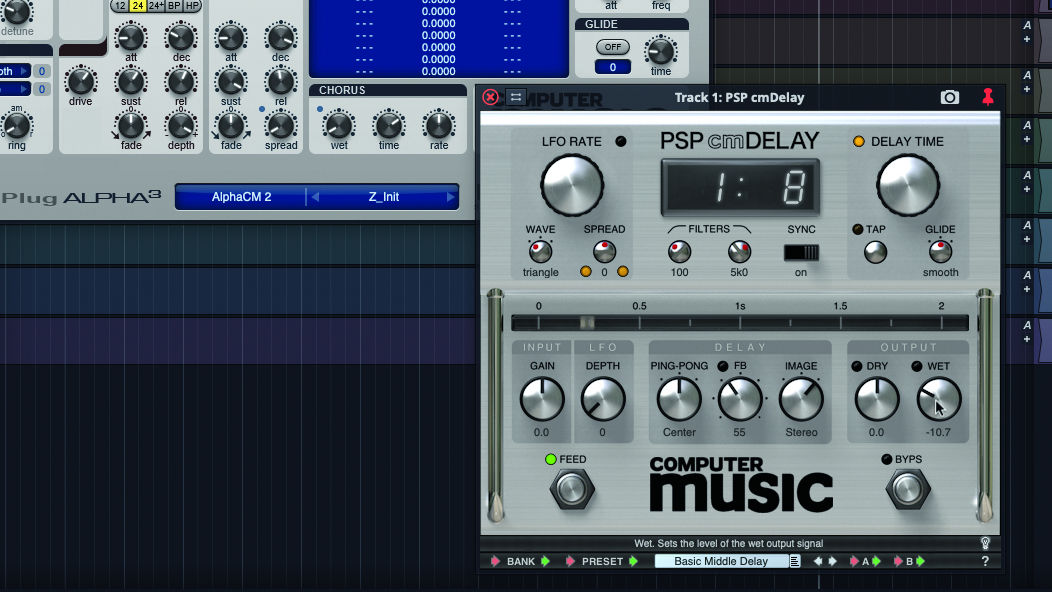
Step 6: As you might have guessed, we need to activate the chorus effect, as it was a big part of the Juno sound back in the 1980s. We’ll crank the Wet knob up to the halfway mark. We’ll set the Time to 1 o’clock, and the Rate to 3 o’clock. Ah, that does the trick, getting us much closer to the original patch.
Computer Music magazine is the world’s best selling publication dedicated solely to making great music with your Mac or PC computer. Each issue it brings its lucky readers the best in cutting-edge tutorials, need-to-know, expert software reviews and even all the tools you actually need to make great music today, courtesy of our legendary CM Plugin Suite.










